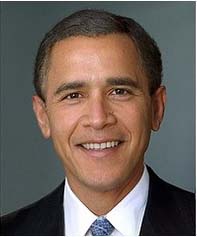The Two Faces of Attractiveness
Imagine that you’re an early human, trying to make your way in a perilous world. One very useful talent would be reading and reacting to the faces of other early humans—rapidly categorizing them into good and safe, on the one hand, or bad and threatening on the other. This skill would come in handy for everything from selecting mates to identifying friends and enemies.
But how do we make these quick judgments? Well, the most obvious rule-of-thumb might be something like this: Is this face familiar or strange? Familiar faces are easy to process and categorize—as a brother or neighbor or member of the tribe. So early on, we came to link familiarity and ease-of-processing with safety and trust and good feelings.
Psychological scientists call this “cognitive fluency,” and it’s a powerful bias that still shapes many of our everyday decisions. Unless we deliberately slow down and second-guess our automatic judgments, we are going to prefer what we know to what we don’t. Our world is not so perilous as it once was, but we still tend to operate by this ancient bias.
But there’s a big problem with this view of human decision making. It doesn’t explain attractiveness, or at least not fully. Attractiveness is the modern equivalent of what our ancient ancestors saw as trustworthy and safe, so we would expect any deviation in the faces we actually know to diminish attractiveness. Yet a huge amount of research says the opposite—that in fact average faces are the most attractive. Blends of human traits are far more appealing than faces that are identifiable as individuals.
This automatic judgment—beauty equals average—is also a powerful cognitive bias, at least as predictable is the cognitive fluency rule. Indeed, according to psychological scientist Jamin Halberstadt, there is not a single study that has failed to show this effect. So how do humans reconcile these competing impulses in making decisions today?
Halberstadt, of the University of Otago in New Zealand, working with colleagues in the US and the Netherlands, has been trying to sort out this cognitive paradox. Why would average faces—more ambiguous, less identifiable faces—be more appealing? One possibility, he thought, is that average faces are more attractive in a large, universal sense, but less attractive at the local level. That it, if we know a unique face from personal experience, then that deviation from the norm is more appealing, because of its familiarity, than a prototype human face. He decided to test this idea with morphed faces.
 Halberstadt recruited equal numbers of volunteers from New Zealand and the Netherlands. He collected pictures of national (but not international) celebrities—that is, people who were famous in either New Zealand or the Netherlands but not both. He then used morphing software to blend pairs of faces of the same nationality and gender. All the volunteers viewed all the morphed faces and rated their attractiveness.
Halberstadt recruited equal numbers of volunteers from New Zealand and the Netherlands. He collected pictures of national (but not international) celebrities—that is, people who were famous in either New Zealand or the Netherlands but not both. He then used morphing software to blend pairs of faces of the same nationality and gender. All the volunteers viewed all the morphed faces and rated their attractiveness.
So the New Zealanders were rating morphs of faces they knew from New Zealand TV and sports, plus morphs of totally unfamiliar faces; and the Dutch volunteers were doing the equivalent. After they had rated all of them, they viewed and rated all the original faces, from which the morphed faces had been created. The idea was to see if judgments of attractiveness are universal—and always favor the average face—or if these judgments vary from locality to locality.
The results were unambiguous. As reported in the journal Psychological Science, both Dutch and New Zealand volunteers rated the unknown celebrity morphs as more attractive than the celebrities themselves. That is, they confirmed the “beauty in average” rule-of-thumb. But they also rated the local celebrity morphs as less attractive than the originals. This is the first evidence that, under some circumstances, the average is unattractive, Halberstadt says.
So why would the very same faces be more or less attractive to different people, depending on their experience? It must be the potency of the fluency bias, Halberstadt concludes. It appears that a morphed face is a good and easy-to-process example of a universal human “face”—but it is a poor and difficult-to-process example of the original, locally known faces. The ease of processing the prototypical faces boosts positive emotions, and these emotions generalize to make average faces generally appealing.
Excerpts from Wray Herbert’s blogs—“We’re Only Human” and “Full Frontal Psychology”—appear regularly in The Huffington Post and elsewhere.





APS regularly opens certain online articles for discussion on our website. Effective February 2021, you must be a logged-in APS member to post comments. By posting a comment, you agree to our Community Guidelines and the display of your profile information, including your name and affiliation. Any opinions, findings, conclusions, or recommendations present in article comments are those of the writers and do not necessarily reflect the views of APS or the article’s author. For more information, please see our Community Guidelines.
Please login with your APS account to comment.